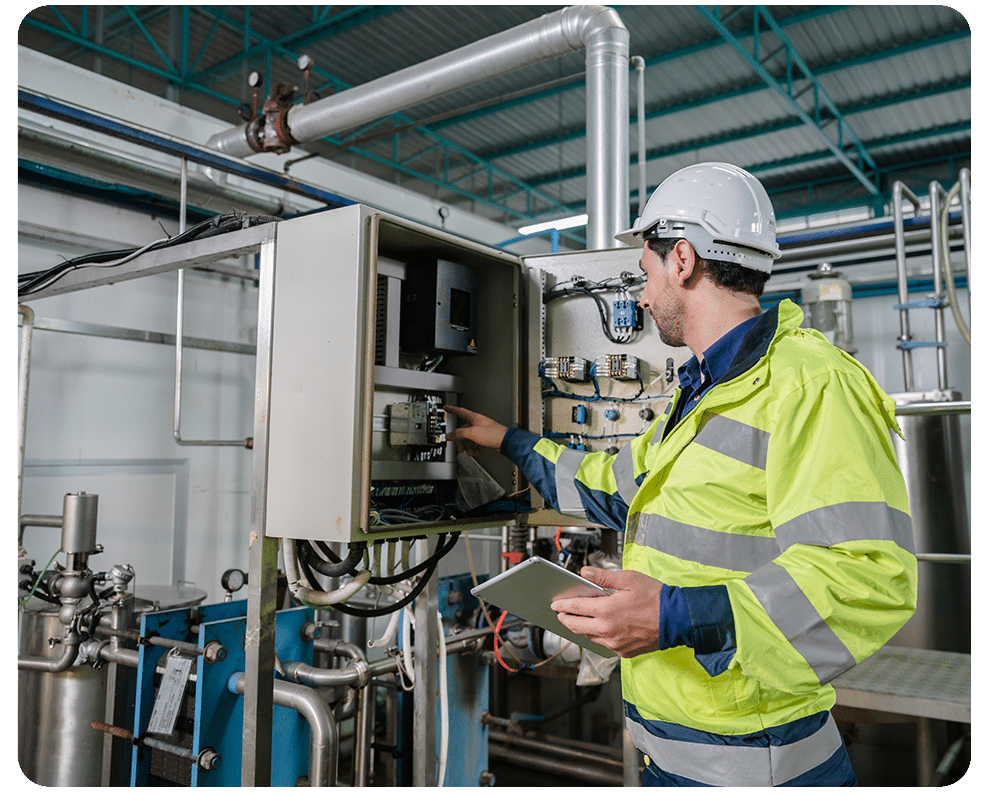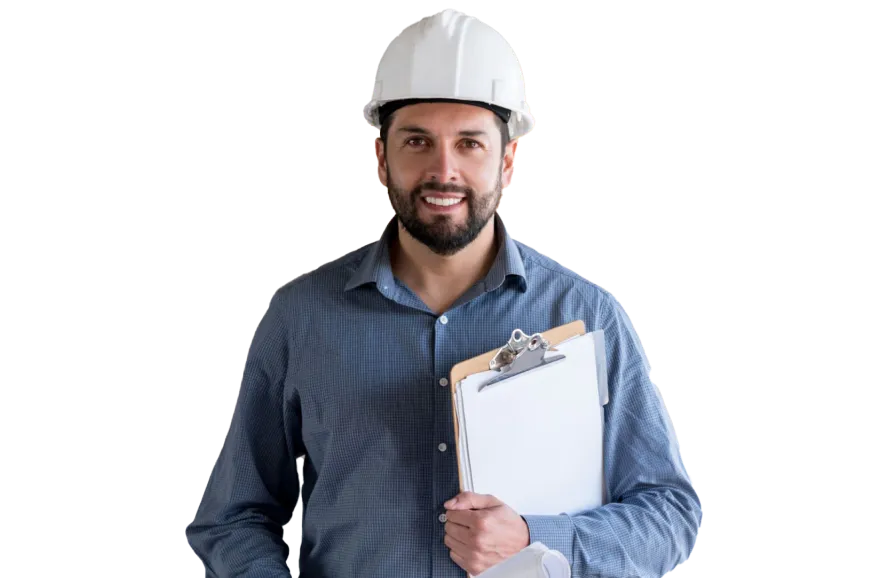April 25, 2024 7 min read
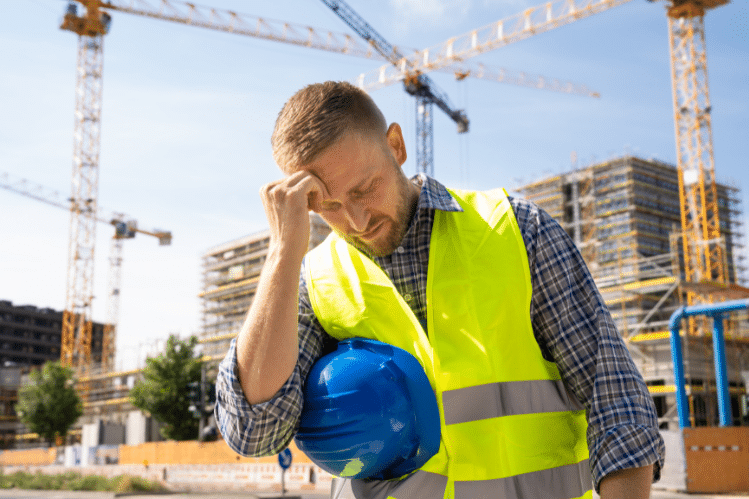
3 Ways to Improve Mental Health in Construction
Industry:
Solution:

The construction industry is facing a mental health crisis. One of the most alarming factors contributing to the growing concern over the health and wellbeing of these employees is the sobering fact that construction has the second highest rates of suicide among major industries. We believe that mental health has become one of the biggest safety risks in the industry and should be treated as seriously as any other construction hazard. But it can be difficult to know where to start. In this blog, we’ll share how the industry got here and provide three strategies you can use to improve mental health in construction.
Trigger Warning: Suicide. Please note as you continue reading, we are sharing some distressing statistics about mental health and suicide in the construction industry. If you or someone you know is experiencing thoughts of suicide call or text the National Suicide Prevention Lifeline at 988.
The State of Mental Health in the Construction Industry
Struggles with mental health issues like anxiety and depression are becoming more common, not just for construction workers. But everywhere. Studies show that 87% of us have experienced at least one mental health issue, with over half of us (65%) feeling like it interfered with our ability to work.
That means, odds are, you’ve experienced anxiety, depression, burnout, or some other challenge.
But when we drill into certain industries, like construction, the trends become even more concerning. The prevalence of very serious substance use disorders and suicidal ideation are higher in construction than other industries.
Men working in construction have a rate of suicide four times higher than the general population.
To put this into perspective: the suicide rate for men in construction and oil extraction occupations was five times greater than the rate for all fatal work-related injuries in the construction industry. By some accounts, it could top OSHA’s Fatal Four list.
But psychosocial risk factors like mental illness are often overlooked in construction compared to other physical hazards on the job site (e.g., slips, trips, falls, electrocution, etc.). In some cases, mental health conditions are even minimized or played down.
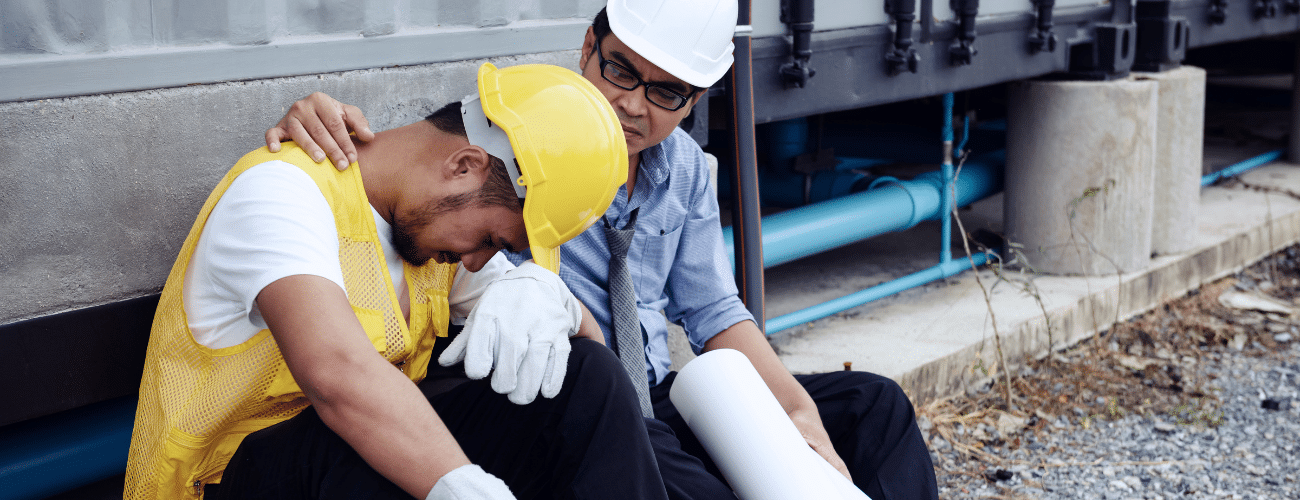
Why Declining Mental Health in Construction Makes it a Top Industry Hazard
Of course, suicide rates in construction are a top concern. But that’s not the only risk of declining mental health in the industry. Depression, anxiety, and substance misuse are also common in the industry, and these mental health challenges can make working on a construction site even more dangerous.
Substance use at work can impair one’s judgment and fine motor skills. But it’s also been found that depression symptoms put workers at three times the risk of workplace injury and fatalities. This is because anxiety and depression are often found to impact quality of sleep, leading to chronic fatigue.
Why Depression, Anxiety, and Suicide Rates are Higher in Construction
Research shows that 90% of people who die by suicide have a mental health condition. The most common conditions being depression, alcohol misuse, anxiety, and trauma.
There are numerous factors that contribute to the rapid decline of mental health among construction workers. Some of these are cultural, while others are related to the nature of the industry and the job.
Cultural Causes
Construction is a male-dominated industry and it’s been shown that men have higher suicide rates than women. Part of that ties back to unhealthy gender roles where men feel that they must exude strength and feel that “mental health conditions, or seeking help, may be seen as personal weakness.”
This stigma leads to men, on average, being less likely to seek mental health treatment than women. A 2021 survey by the American Psychiatric Association Foundation found that only 18% would openly discuss their mental health with co-workers.
We’d like to share that this is not unique to the construction industry. Depression and suicide are a leading cause of death for all men. If you are reading this and struggling, please know that these issues are very real and very difficult to handle on your own. We recommend the Colorado Industry Alliance for Suicide Prevention. They have resources and a text/call hotline that you can use. If you or someone you know is experiencing thoughts of suicide call or text the National Suicide Prevention Lifeline at 988.
Demands of the Role
Other main factors that lead to higher rates of depression, anxiety, and substance use can be tied back to the nature of the job:
- Chronic pain from injuries sustained on the job
- Long hours, often in extreme heat or cold, contribute to fatigue
- Seasonal and cyclical work making it difficult to plan financially and spend time with loved ones
- Seeing other colleagues die or get badly injured in the job site
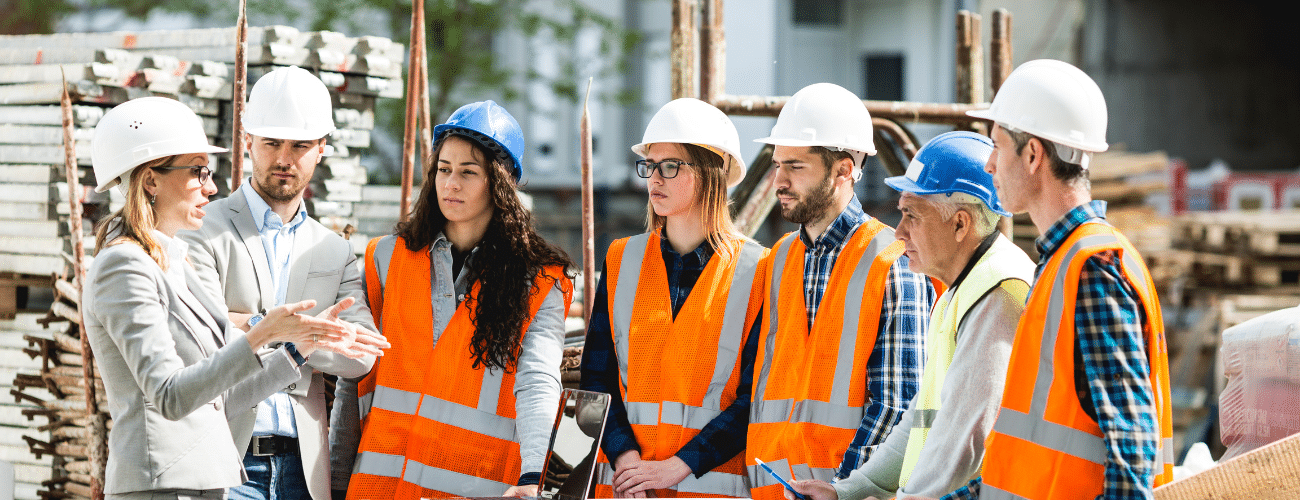
3 Things You Can Do to Improve Mental Health for Your Crews
There is no one solution to the mental health crisis in construction. But there are many things that you can do to start making a difference.
1. Train Management
Not all employees are going to feel comfortable asking for help. And you might not always notice when someone needs help. That’s why it’s so important to create a culture of support. One that actively tries to foster positive mental health rather than waiting for someone to need help.
And that starts with management.
It’s clear that long hours, workplace injury, and compounding fatigue have a negative impact on one’s mental and emotional health. Management must be trained to spot these signs, to keep open dialogue, and to mitigate as many of these negative effects as possible given the demands of the job.
If you are a senior leader in your organization, it’s up to you to intervene if management sweeps these issues under the rug and doesn’t prioritize mental health. But even if you aren’t a leader at your firm, all employees should feel empowered to speak up and advocate for themselves or others.
2. Provide Easy Access to Resources
Companies like the Construction Industry Alliance for Suicide Prevention (CIASP) offer numerous free resources that companies can provide to their workers. CIASP also has resources that management can use to create safer, more supportive spaces. This includes:
- ToolBox Talks
- Posters and Flyers
- Educational Videos
- Additional Information on Suicide Prevention for Employees
We also offer free resources to companies through our Vector Cares program. These courses are free to use:
- Smart Mental Health – Reducing Stress and Anxiety
- Stress Management and Prevention
3. Create Policy Changes
Too often, companies focus on awareness of issues and stop at providing resources (like the ones we just shared). But that’s not enough.
It’s important to make policy-level changes at your organization to improve the wellbeing of your employees. It’s clear that injuries sustained at work and long hours in difficult working conditions are contributing to more fatigue and struggles with mental health. And mental health challenges can, in turn, lead to more injuries, creating a vicious cycle.
You have the power to impact that cycle. Not everything can be changed overnight, but you have the power to consider changes to your schedule. To provide better training to reduce workplace injuries. And to set up employee assistance programs (EAP) that provide real benefits, crisis support, and access to mental health care.
Mental Health and Suicide Prevention in Construction: The Next Dimension of Safety
This webinar with Sonya Bohmann, Executive Director at Construction Industry Alliance for Suicide Prevention, provides strategies to help construction firms develop a company culture that promotes well-being
Watch Webinar





